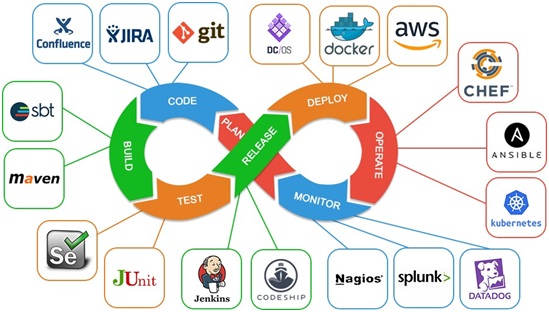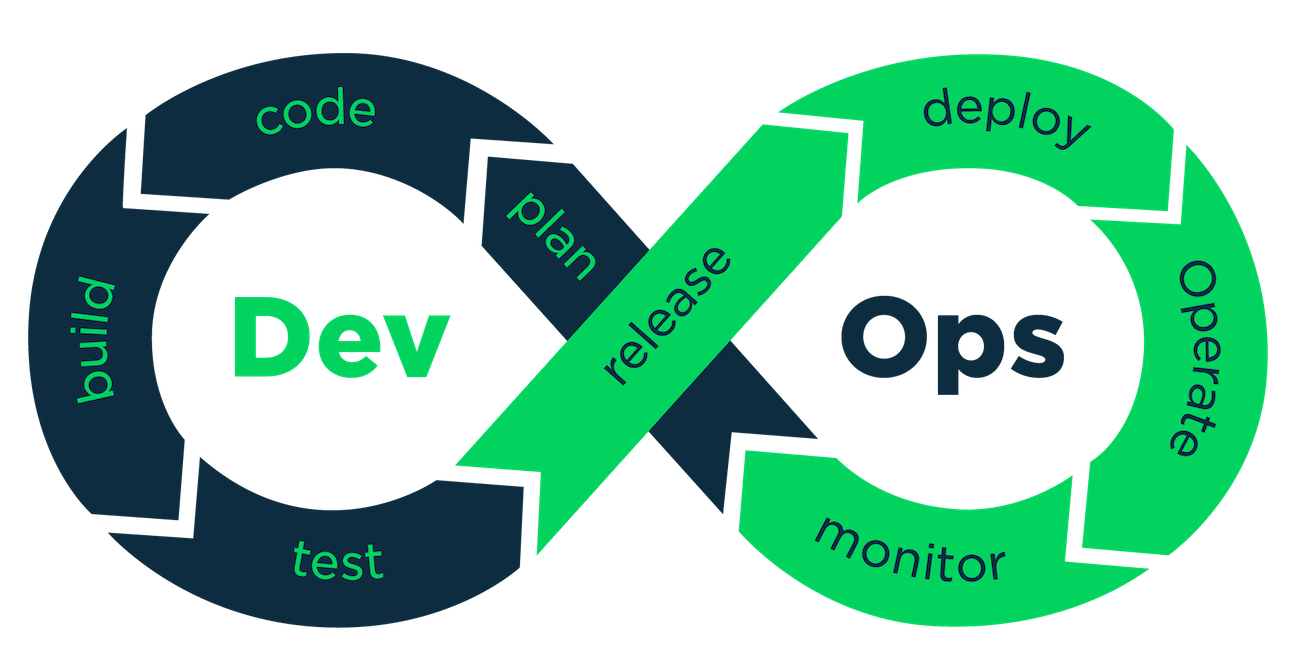In the fast-paced world of web development, delivering high-quality applications quickly and efficiently is more important than ever. This is where DevOps comes in. DevOps—a combination of Development and Operations—is a set of practices and cultural philosophies that aim to bridge the gap between development and IT operations. By fostering collaboration, automation, and continuous improvement, DevOps is transforming how web applications are built, deployed, and maintained.
As we move further into 2025, the adoption of DevOps’s in web development is accelerating, offering new possibilities for efficiency, reliability, and innovation. In this article, we’ll explore the role of DevOps’s in modern web development, its key benefits, and how businesses can implement DevOps practices to stay ahead of the competition.
What is DevOps?
DevOps is a cultural and technical movement that emphasizes collaboration, automation, and continuous improvement across the entire software development lifecycle (SDLC). It breaks down the traditional silos between development and operations teams, enabling faster and more reliable delivery of applications.
Key principles of DevOps include:
- Collaboration: Encouraging teamwork and communication between development and operations teams.
- Automation: Automating repetitive tasks like testing, deployment, and monitoring.
- Continuous Integration and Continuous Deployment (CI/CD): Integrating code changes frequently and deploying them automatically.
- Monitoring and Feedback: Continuously monitoring applications and gathering feedback to drive improvements.
Why is DevOps Important in [2025]?
1. Faster Time-to-Market
DevOps’s enables businesses to deliver applications faster by automating processes and reducing manual interventions. This is crucial in today’s competitive landscape, where speed is a key differentiator.
2. Improved Collaboration
By breaking down silos and fostering collaboration, DevOps ensures that development and operations teams work together seamlessly, reducing misunderstandings and errors.
3. Enhanced Reliability
DevOps practices like automated testing and continuous monitoring improve the reliability and stability of web applications, reducing the risk of downtime and failures.
4. Scalability
DevOps supports scalable infrastructure and processes, allowing businesses to handle increased traffic and demand without compromising performance.
5. Cost-Effectiveness
By automating processes and improving efficiency, DevOps’s reduces operational costs and maximizes resource utilization.
Key Benefits of DevOps in Web Development
1. Continuous Integration and Continuous Deployment (CI/CD)
CI/CD pipelines automate the process of integrating code changes and deploying them to production. This ensures that new features and updates are delivered quickly and reliably.
- Faster Releases: Automating deployments reduces the time required to release new features.
- Reduced Errors: Automated testing catches bugs early, reducing the risk of errors in production.
2. Improved Collaboration and Communication
DevOps fosters a culture of collaboration and shared responsibility, ensuring that development and operations teams work together effectively.
- Shared Goals: Teams align around common objectives, reducing conflicts and improving outcomes.
- Faster Problem-Solving: Collaboration enables faster identification and resolution of issues.
3. Enhanced Security
DevOps’s integrates security into the development process, ensuring that applications are secure from the start. This approach, known as DevSecOps, reduces vulnerabilities and improves compliance.
- Automated Security Testing: Security checks are integrated into the CI/CD pipeline.
- Continuous Monitoring: Real-time monitoring detects and mitigates security threats.
4. Scalability and Flexibility
DevOps supports scalable infrastructure and processes, enabling businesses to handle increased traffic and demand without compromising performance.
- Cloud Integration: DevOps’s integrates seamlessly with cloud platforms like AWS, Google Cloud, and Azure, enabling scalable and flexible solutions.
- Infrastructure as Code (IaC): Automating infrastructure provisioning ensures consistency and scalability.
5. Continuous Improvement
DevOps emphasizes continuous feedback and improvement, enabling businesses to iterate and optimize their applications over time.
- Monitoring and Analytics: Real-time monitoring provides insights into application performance and user behavior.
- Feedback Loops: Gathering feedback from users and stakeholders drives continuous improvement.

How to Implement DevOps in Web Development
1. Foster a DevOps’s Culture
DevOps is as much about culture as it is about technology. Encourage collaboration, shared responsibility, and continuous learning within your teams.
- Cross-Functional Teams: Create teams that include members from development, operations, and other relevant departments.
- Training and Education: Provide training to help teams adopt DevOps practices and tools.
2. Automate Processes
Automation is at the heart of DevOps. Identify repetitive tasks and automate them to improve efficiency and reduce errors.
- CI/CD Pipelines: Use tools like Jenkins, GitLab CI/CD, or CircleCI to automate code integration and deployment.
- Infrastructure as Code (IaC): Use tools like Terraform or Ansible to automate infrastructure provisioning.
3. Implement Continuous Monitoring
Continuous monitoring ensures that applications are performing as expected and helps identify issues before they impact users.
- Monitoring Tools: Use tools like Prometheus, Grafana, or New Relic to monitor application performance.
- Alerting Systems: Set up alerts to notify teams of potential issues in real-time.
4. Integrate Security
Integrate security into the DevOps’s process to ensure that applications are secure from the start.
- DevSecOps: Use tools like OWASP ZAP or Snyk to automate security testing.
- Compliance Checks: Ensure that your applications comply with relevant regulations and standards.
5. Gather Feedback and Iterate
Continuous improvement is a core principle of DevOps. Gather feedback from users and stakeholders to drive iterative improvements.
- User Feedback: Use surveys, analytics, and user testing to gather feedback.
- A/B Testing: Test different versions of features to determine what works best.
Real-World Examples of DevOps in Web Development
1. Netflix
Netflix uses DevOps to deliver a seamless streaming experience to millions of users worldwide. Its CI/CD pipelines and automated monitoring ensure high availability and fast updates.
2. Etsy
Etsy’s DevOps practices enable it to deploy code changes multiple times a day, ensuring that new features and updates are delivered quickly and reliably.
3. Amazon
Amazon’s DevOps culture and automation tools allow it to handle massive traffic and deliver a reliable shopping experience to customers.
Conclusion
DevOps is transforming modern web development by fostering collaboration, automation, and continuous improvement. By implementing DevOps practices, businesses can deliver high-quality applications faster, improve reliability, and stay ahead of the competition.
As we move further into 2025, the adoption of DevOps is expected to grow, offering new opportunities for innovation and efficiency. By embracing DevOps’s, businesses can build scalable, secure, and user-friendly web applications that meet the demands of today’s digital landscape.
Read More: The Role of Microservices Architecture in Modern Web Development
High-Authority External Links:
- AWS DevOps Guide – A comprehensive resource for implementing DevOps practices on AWS.
- Google Cloud DevOps’s – A guide to DevOps’s practices and tools on Google Cloud.





